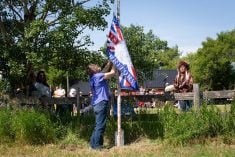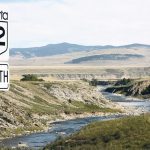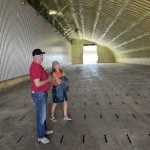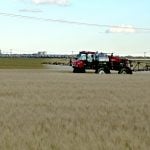One glance at Dean and Charlene Green’s cattle facilities lets you know they’re in the beef business for the long run. The solid construction of the pipe-rail corrals, roomy metal cow shelters, separate calf shelters and sizable calving barn lend an air of permanency that runs as deep as their family roots in the Thorsby area of west-central Alberta.
Dean tells of how his Washington ancestors in 1924 travelled by covered wagon chasing cattle up from Idaho to establish the bridle-bit brand he uses to this day. He speaks with equal enthusiasm about the future in beef for their children, the fifth generation to be involved in agriculture, Lisa, 20, Brandon, 18, and Lance, 15.
Read Also
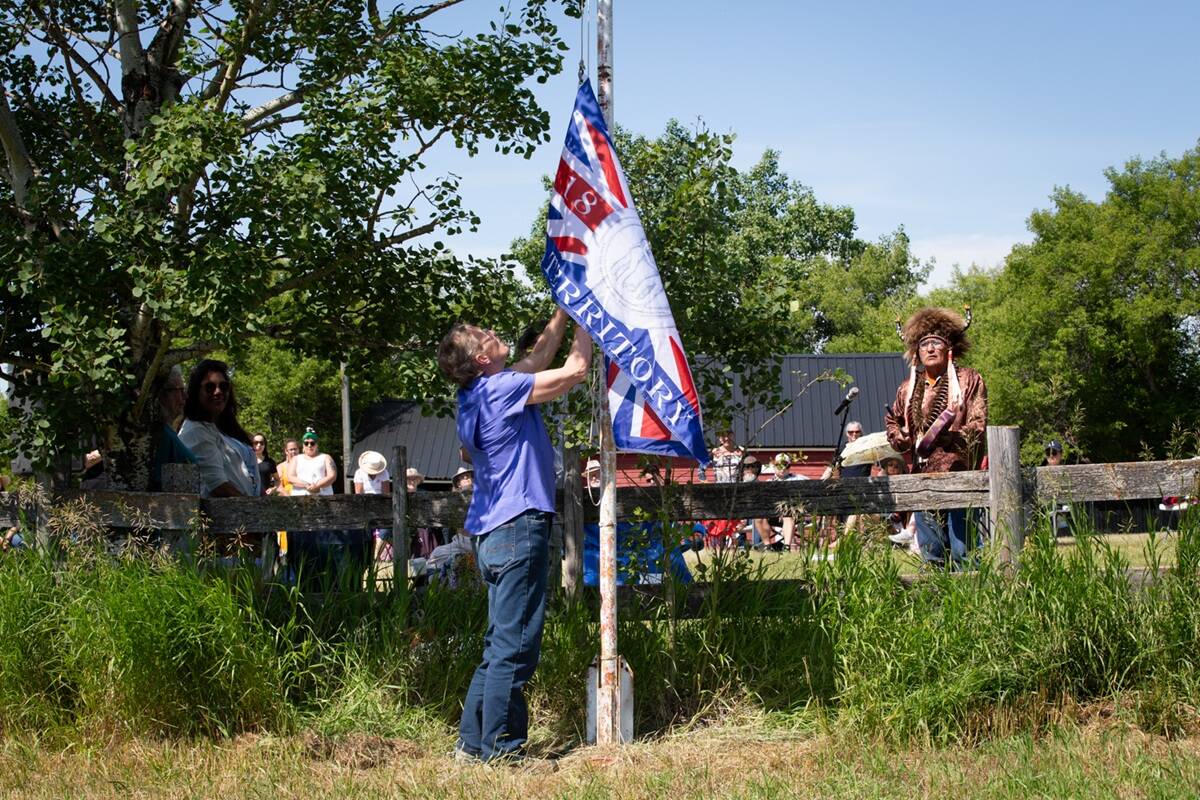
Treaty Land Sharing Network expands reach in Saskatchewan and Alberta
The Treaty Land Sharing Network, which connects land holders with First Nations and Metis people, has expanded since it began in 2018
He was about that age when he started managing the family farm back in the early ’80s with 14 cows, 10 sheep, pasture, hay and cropland. Never having had an inclination to grain farm, the cropland always has been rented out while they concentrated on building the livestock side to today’s 300 cows and 50 sheep, some of which trace back to the original lines.
Green says the most significant change during their time has probably been the evolution to four distinct calving seasons from the family’s traditional January through March time slot.
Like many others, they started holding on to cows when prices bottomed out after BSE, but rather than adding to the bull battery as the herd eventually doubled in size, they put the bulls they had to better use by splitting the calving season.
Today, the new year still ushers in the first calving run through to the end of February. The barn gets a thorough cleaning and the sheep move in from their winter pasture for lambing through March. A small group calves out on pasture for a month starting April 15 and then they’re back in the thick of things from August 1 to September 25 with a larger group calving on pasture and end the year with a three-week calving period starting November 20. The bulls are pulled promptly at the end of each breeding period to establish the calving time frames.
“Now, we are culling heavier and keeping more of our own heifers for replacements, but we’ll stay with the split calving seasons because we found it works for us,” Green says.
It works bull-wise because they actually need only three bulls in service to maintain a 1:30 bull-to-cow ratio for each of the three main cow groups, versus at least 10 if they were to run all of the cows together.
They keep six bulls on hand, giving them enough bull power to be able to switch out any that seem groggy during breeding periods before they tire out, Green explains. From June through August the bulls are rented to neighbours who have very small herds allowing ample time for them to fatten up for the fall breeding seasons. The bonus of having alternate summer homes for the bulls is that there’s no worry of bull fights with the neighbours’ bulls in the adjacent pasture.
Frequently monitoring bull condition and jotting down observations gives him a calving date for most cows. The heifers are bred Angus in a separate breeding pen to calve at the same times as the cow groups. All of the females are one-iron cattle with replacements retained from and for each specific calving group. Only once in a while does a really good cow get one second chance by moving into a later calving group.
Having four calving seasons also works time-wise for the family because it splits up the workload. It’s always breeding season, calving season or weaning time, but in smaller doses with about 100 females in each of the three main groups.The barn is large enough to accommodate 20 cows and is set up with a maternity pen and 10×10-foot holding pens if needed. Their rule of thumb for winter calving is to calve outside when the temperature is above zero and move them in for calving when it dips below zero.
“If water freezes at zero, I figure it’s freezing for a wet calf, too. We just make sure the calf is completely dry and then there’s no problem putting them outside in cold temperatures,” Green says.
Each corral is numbered and named with well-bedded calf shelters and a cow shelter (35×40) for protection and room enough to move around with the bale shredder. After 50 pairs have been moved into a corral, it’s closed out and they start a new corral for another 50 pairs.All of the large corrals for pairs and smaller corrals for other classes of cattle are now the pipe-rail style with rails welded to metal posts set in the ground — four rails high for the wintering pens and six rails high for working pens. His dad built the first one and they’ve gradually added to the system through the years because they found the fences to be strong, durable and low maintenance. Basically, all that’s needed is a new coat of paint every 10 years or so.
A side benefit they’ve really noticed by managing the herd in smaller groups and daily feeding is that it’s much easier to watch the calves for health problems.
“It’s hard to see every calf every day in a group of 300. This way, I go in with the shredder, then walk around to see that all of the calves get up. When it’s cold, they’ll run out, nurse a bit and scoot back to the shelter. Any that don’t, get a second look,” Green says.
It’s a similar routine for the August and April groups calving on pasture close to the yard where there’s a working corral should a cow need help or to hold a pair that needs extra time to bond. They limit the calving area to 40 acres to keep the grass trimmed down so it’s easy to see all of the calves at feeding time.
They like a grass mix of orchardgrass, timothy, brome with some alsike clover for their hayfields and pasture land and rent additional pasture as needed to avoid overgrazing by managing the stocking density on each pasture for the grazing season. They’ll trail cattle to pastures within five miles of the yard. Beyond that they go by truck.
They are proud of their calf survival rate, consistently around 100 per cent when death losses and twins are balanced off. Twinning is fairly common in their Simmental-Red Angus herd, Charlene says. If at all possible, they try to avoid leaving a cow to raise two calves because it takes down the cow too much.
She has tried every trick in the book to adopt calves onto cows that have lost their own calves and now has it down to a one-day event by using duct tape to attach the rump hide and tail of the dead calf onto the calf to be adopted. The small hide works just as well as a full hide and duct tape works much better to keep it in place than trying to tie it on, she explains.
Split calving also spreads marketing risk. The August-September-born calves are sold into the grasser market in May or June and the November-December calves can be sold into the same market or held for grassing on the farm. They like to sell the January-February-born calves early in the fall calf run around late August or early September if market conditions are right and the spring-born calves are held over until the new year.
The Greens are staunch supporters of the auction market system because of the competitive bidding and because they’d never want to see the industry lose this service as a marketing option.
“This year calf prices were the highest we’ve ever received and you sure appreciate the good times that much more if you’ve gone through the hard times,” Green says.
Cattle politics and prices aside, the good times have far outnumbered the tough times raising their family on the farm. Between the cattle and sheep enterprises, both he and Charlene have been able to work year round on the farm, which has let them participate fully in school, church and community activities with the kids.
On the flip side, the kids have always been good at knowing what jobs need to be done and taking care of them, Green says, adding that both grandfathers reside nearby and enjoy lending a hand. The grandpas and whatever kids are available haul 90 per cent of the feed home. Sometimes there’s a steady caravan of three generations travelling the road one way or another.
The Greens feel that mid-size is the right size for them. They don’t see an expansion in their future unless any of the kids decide to make cattle a career and want to get bigger, in which case that would be their own deal and they’d be happy to help out.




